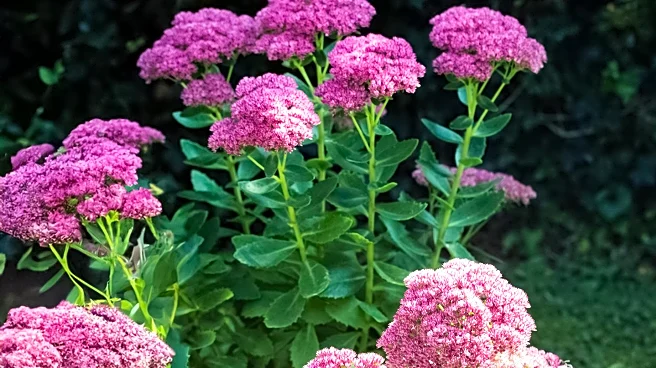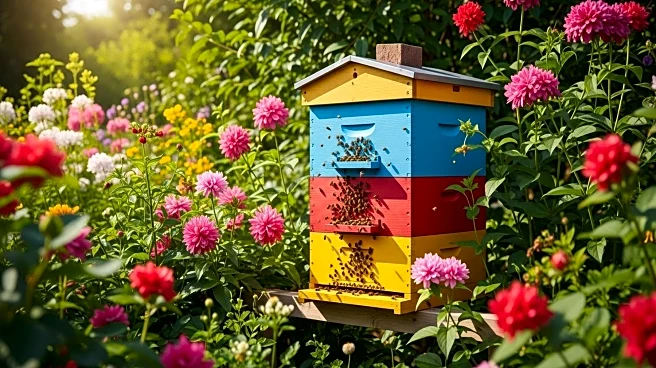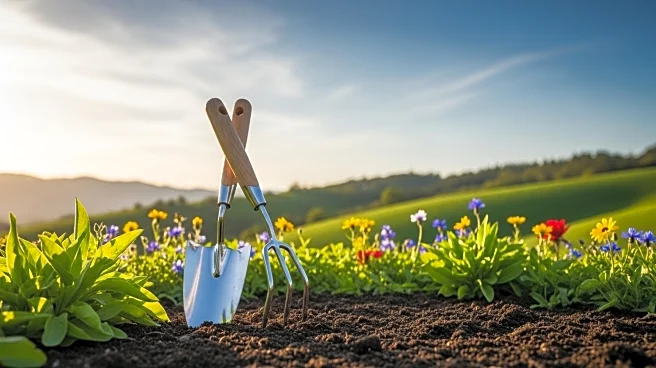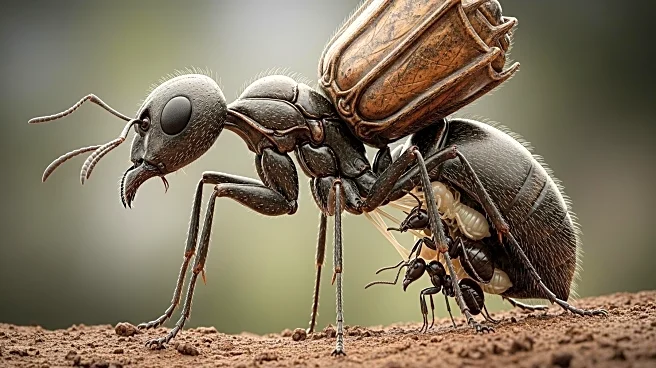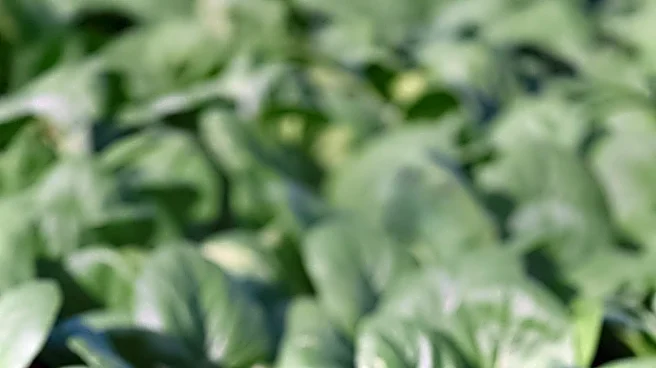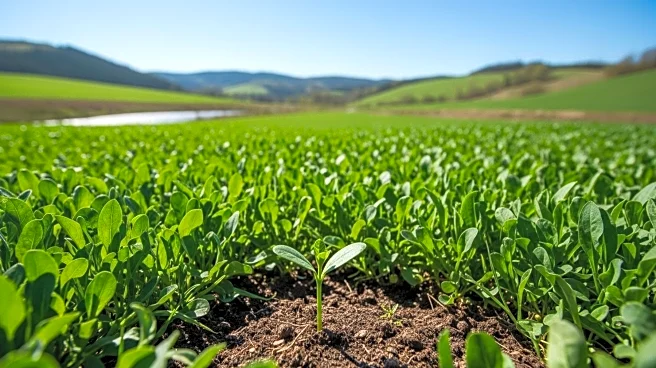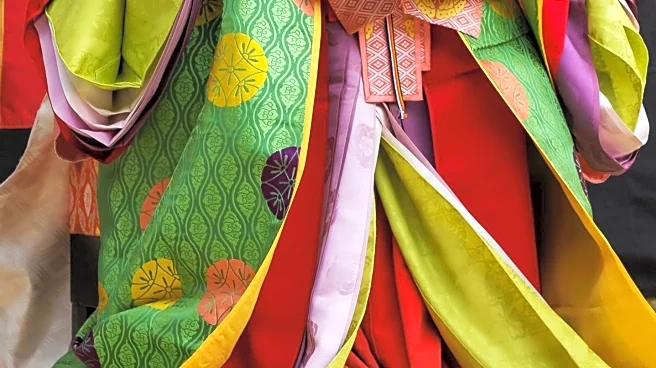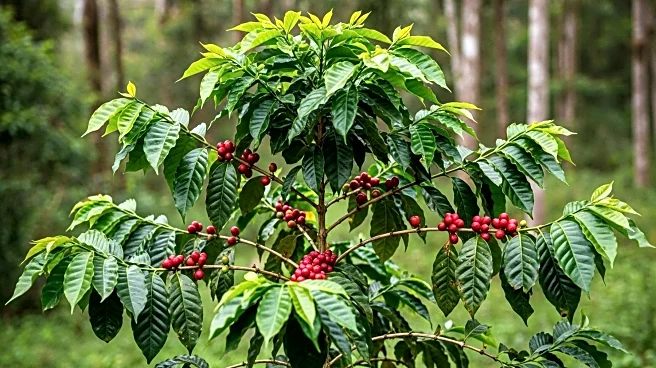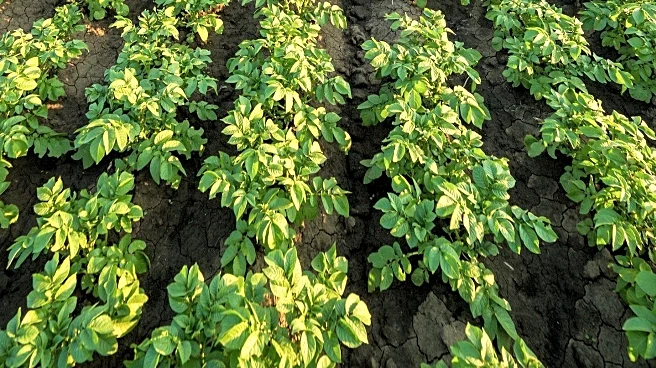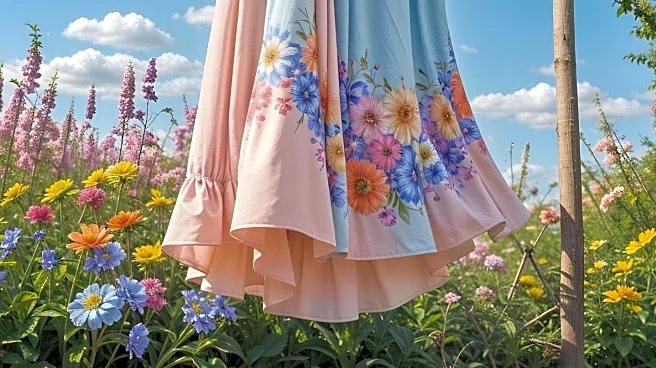What is the story about?
What's Happening?
Fall is considered an optimal time for planting native perennial plants due to the dormancy period that allows plants to focus on root growth. Sarah Sutton, owner of Spicebush Swallowtail Native Plants and Garden Design, highlights the benefits of fall planting, including reduced weed pressure and less need for watering due to increased moisture. Sutton emphasizes the importance of strategic planting to ensure continuous blooms throughout the seasons, which supports pollinator species. Native plants such as white trillium, bloodroot, columbine, and coneflower are recommended for their ability to attract native insects and birds, contributing to a dynamic and life-filled garden.
Why It's Important?
The practice of planting native perennials in the fall has significant ecological benefits. It supports biodiversity by providing habitats and food sources for native insects and birds, such as monarch caterpillars and hummingbirds. This approach not only enhances the aesthetic appeal of gardens but also contributes to the health of local ecosystems. By choosing native plants, gardeners can play a role in preserving native species and promoting environmental sustainability. The excitement of bringing life into one's yard through native plants also fosters a deeper connection with nature and encourages acceptance of the natural food web.
What's Next?
Gardeners are encouraged to plan their gardens with succession planting in mind, ensuring that pollen is available throughout the year for pollinators. This involves selecting a variety of native plants that bloom at different times, from early spring ephemerals to late fall blooms. As awareness of the benefits of native plants grows, more individuals may adopt this practice, potentially leading to increased demand for native plant nurseries and educational resources on sustainable gardening practices.
Beyond the Headlines
The shift towards native plant gardening reflects broader cultural and environmental trends, including increased interest in sustainability and biodiversity conservation. This movement may influence landscaping practices in urban and suburban areas, promoting greener spaces that support wildlife. Additionally, the acceptance of native plants and the creatures they attract can lead to a more harmonious relationship between humans and nature, fostering a sense of stewardship and responsibility for the environment.
AI Generated Content
Do you find this article useful?
